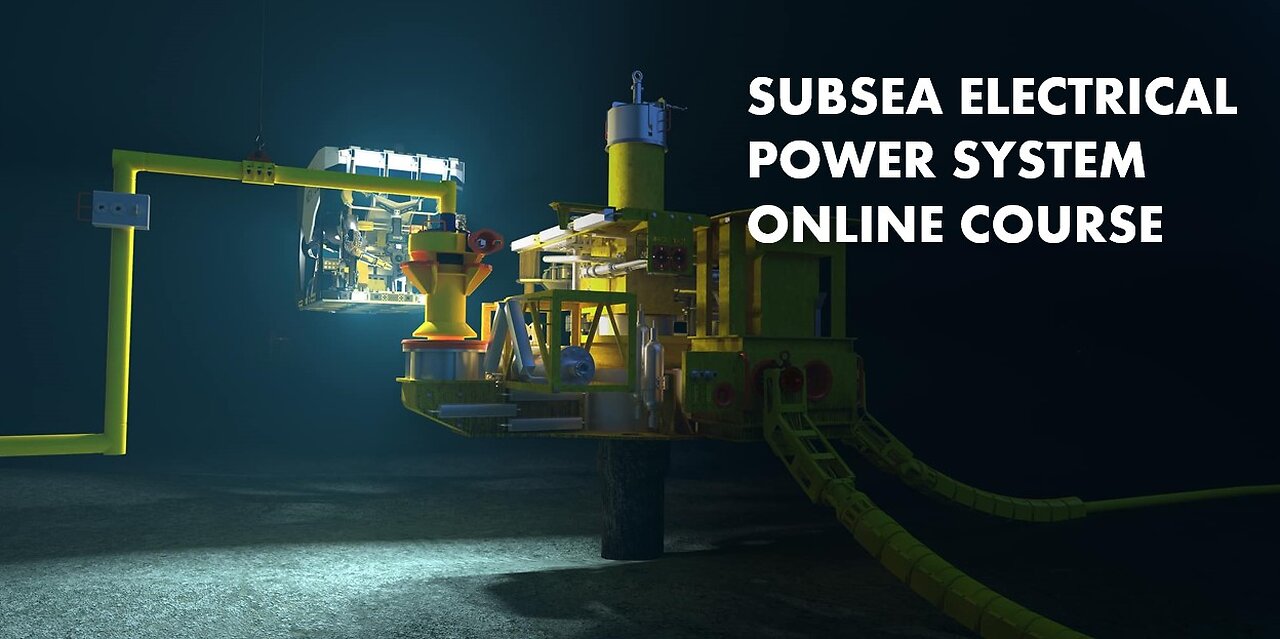Premium Only Content

Subsea Electrical Power System Online Course
The electrical power system in a typical subsea production system that provides power generation, power distribution, power transmission, and electricity from electric motors. The power is either generated on site (from a platform) or onshore (in a subsea-to-beach filed layout). To ensure continuous production from a subsea field, it is of utmost importance that the subsea system’s associated electrical power system be designed adequately.
Electrical Load Calculation
Electrical load calculation is one of the earliest tasks during electrical power system design. Engineers should estimate the required electrical load of all of the subsea elements that will consume the electricity so that they can select an adequate power supply. Each local load may be classified into several different categories, for example, vital, essential, and nonessential. Individual oil companies often use their own terminology and terms such as “emergency” and “normal” are frequently encountered. All of the vital, essential, and nonessential loads can typically be divided into three duty categories: Continuous duty; Intermittent duty; Standby duty (those that are not out of service).
Subsea power distribution systems are enablers for long-distance subsea tie-back developments and energy intensive processing activities on the seafloor. Providing power to subsea compressors, pumps and flowline heating, they are key to make viable and productive projects in deepwater, remote or harsh climate scenarios.
For full videos you can visit this link :
https://drive.google.com/file/d/1UzHWHovcOEzzIij1RoWtNFKlJvJeZlJb/view?usp=sharing
and you will be directed to a google drive link where you can download all files of this course
https://drive.google.com/file/d/1wnHVZHFAJfgQu1Nht83-ZCIfOVKt1aXX/view?usp=drive_link
-
 LIVE
LIVE
The Charlie Kirk Show
21 minutes agoIslam In Texas? + 100 Days Review + Remembering David Horowitz | Halperin, Cernovich | 4.30.25
2,646 watching -
 1:08:49
1:08:49
The Rubin Report
1 hour agoHost Gets Visibly Angry as His Trap for Trump Backfires
8.2K4 -
 LIVE
LIVE
The Mel K Show
1 hour agoMORNINGS WITH MEL K - 4/30/25
576 watching -
 LIVE
LIVE
Benny Johnson
1 hour agoLIVE Trump Cabinet Meeting Right Now in White House, Trump Torching Media | Michelle Obama MELTDOWN
8,534 watching -
 LIVE
LIVE
The Shannon Joy Show
1 hour ago🔥🔥100 Day SHOCKER - Trump Is Deporting FEWER Illegal Immigrants Than Biden! He’s Also Pimping Biden’s mRNA & Fast Tracking Self-Amplifying mRNA Shots! With Special Guests John Beaudoin Sr. & Jessica Rose🔥🔥
397 watching -
 LIVE
LIVE
Grant Stinchfield
53 minutes agoVenezuela Refuses to Release American Hostages... The Media is Silent!
20 watching -
 LIVE
LIVE
Right Side Broadcasting Network
3 hours agoLIVE: President Trump Holds a Cabinet Meeting - 4/30/25
5,604 watching -
 LIVE
LIVE
BitLab Academy
2 hours agoCrypto DIP ALERT! Bitcoin & Atcoins: Sell In May? Crypto Pump or Dump Next!?
112 watching -
 9:53
9:53
Dr David Jockers
1 hour agoHow Sourdough Bread Impacts Blood Sugar and Gut Health!
26 -
 1:00:37
1:00:37
VINCE
3 hours agoMedia Lies On Trump's 100 Days | Episode 33 - 04/30/25
150K101